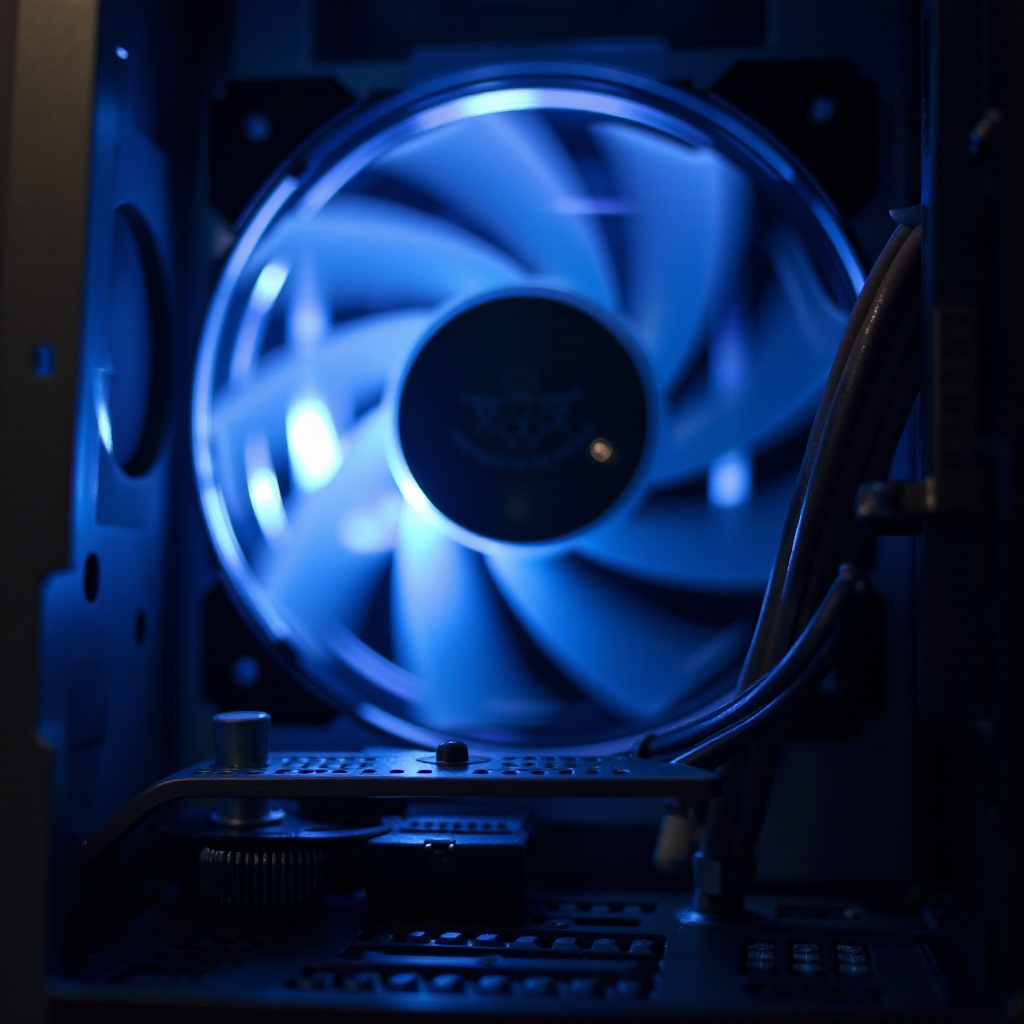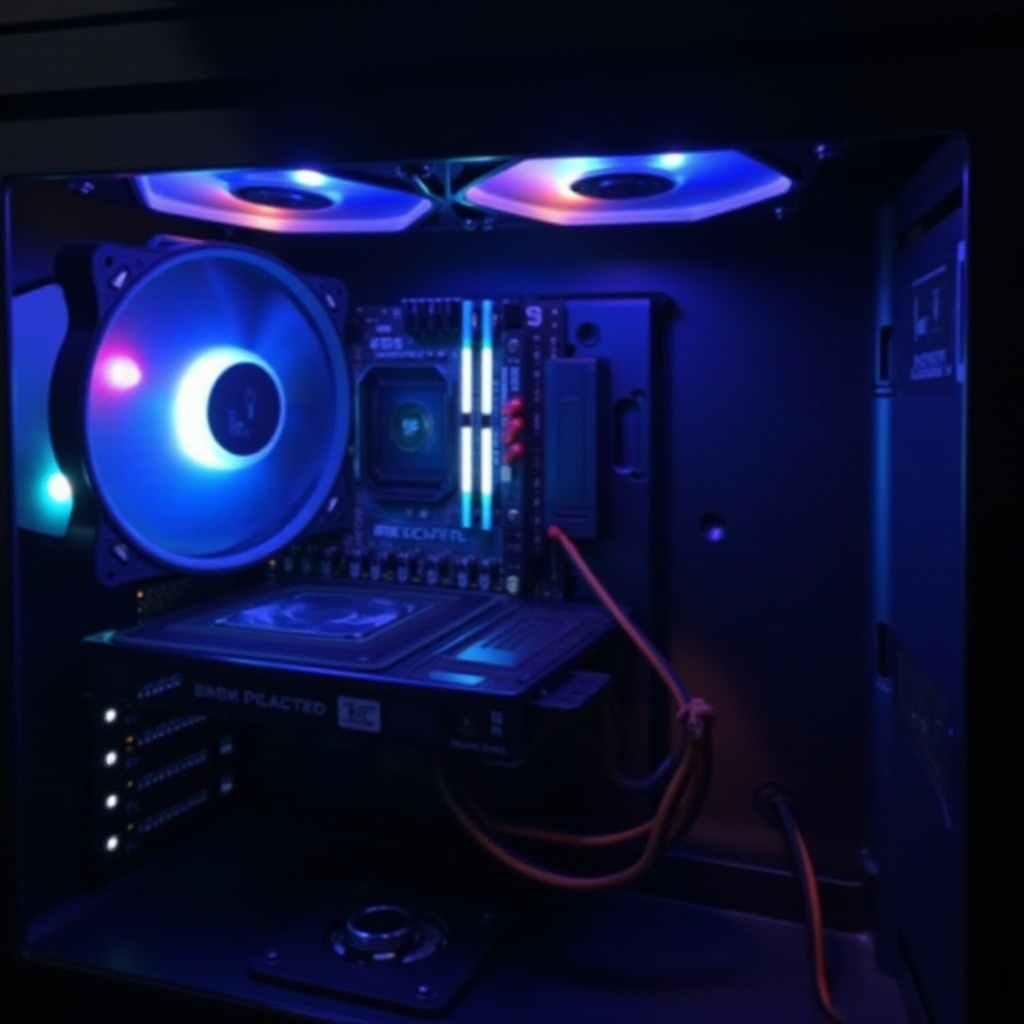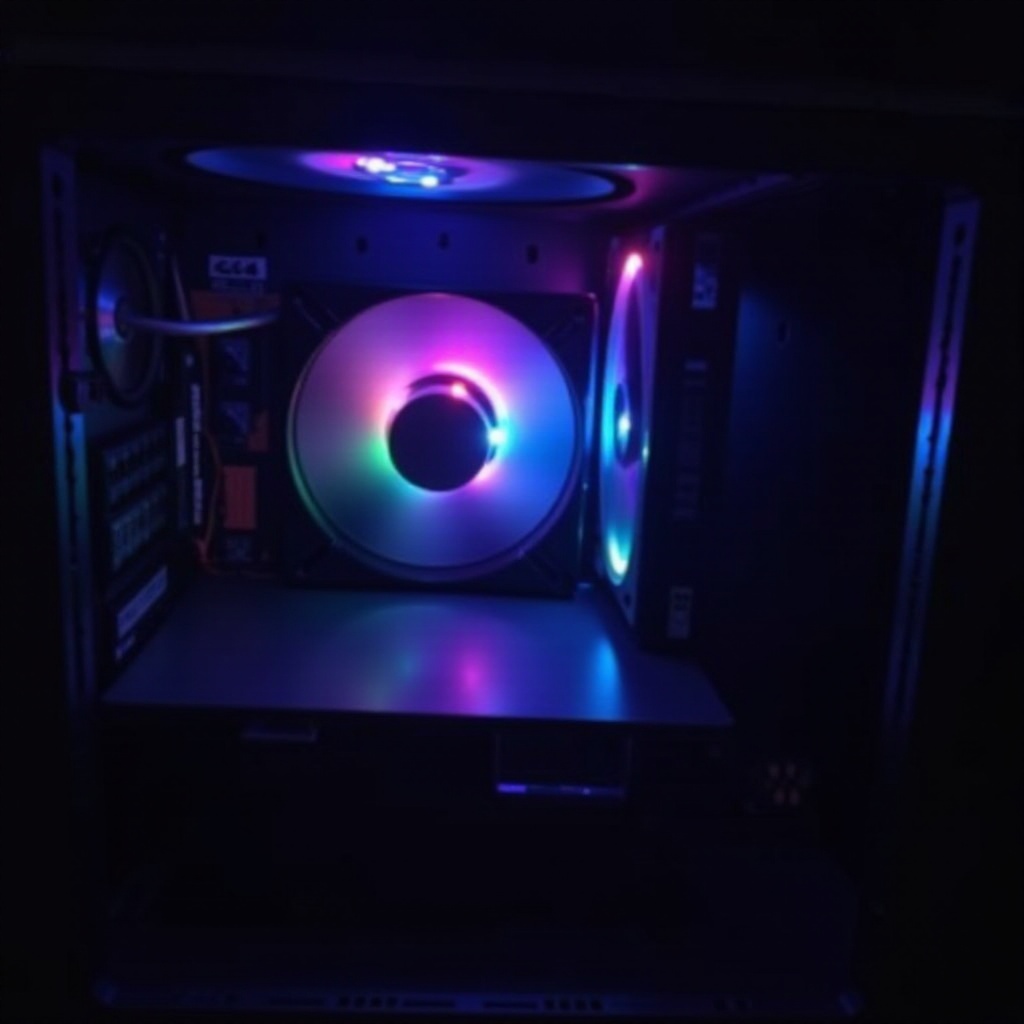Introduction
A smoothly running PC depends on effective cooling systems, where case fans play a pivotal role. Sometimes, these fans stop spinning while their lights remain on, hinting at deeper issues. While it might cause concern due to the potential risk of overheating, rest assured that a solution is within reach. In this comprehensive guide, we’ll explore the mechanics of case fans, identify common problems, and walk you through steps to resolve this perplexing issue. As we delve deeper, understanding the core functionality of your case fans is key to troubleshooting effectively.

Understanding How Case Fans Operate
Case fans serve to manage your computer’s temperature by dissipating heat from various components. Connected to the power supply via specific connectors like 3-pin, 4-pin, or Molex, these fans might be governed by the motherboard or dedicated controllers. The LED lights on the fans work on a separate circuit, explaining cases where the light is operational, but the fan isn’t spinning. Comprehending this independence in operation is crucial to identifying potential disruptions in the fan’s power supply, which could be the root of the problem you’re facing.

Common Causes of a Non-Spinning Case Fan with Working Lights
Recognizing the cause behind your case fan’s issues is vital for implementing the right fix. Several common factors can lead to this situation:
Power Supply Issues
One frequent issue is insufficient power being supplied to the fan. This could stem from a failing power supply unit or an imbalanced power distribution within your system. Ensuring enough power is allocated to the fan is important for its operation.
Fan Connector Problems
A flawed connection could prevent the fan from spinning. Loose, damaged, or incorrectly connected wires interrupt the necessary power flow. Vibration within your PC case may exacerbate such issues by loosening connectors over time.
Obstructions and Physical Blockages
Dust and debris are another leading cause of fan malfunction. A build-up can obstruct the blades, making the fan unable to rotate even when powered correctly. Regular cleaning and maintenance help avert these physical blockages.
Step-by-Step Troubleshooting Guide
Now that we’ve covered potential causes, it’s time to methodically locate and resolve the specific issue with your fan:
Checking Power and Connections
- Power Supply Inspection: Verify that your power supply is adequately functioning and that all power cables are intact and firmly connected.
- Connector Check: Double-check the fan’s electrical connections to ensure they’re properly secured to the motherboard or power source, watching for visible damage or wear.
Testing Fan Functionality
- Manual Spin Test: Carefully try spinning the fan blades manually. Resistance might indicate obstructions due to dust or foreign materials.
- Swap Connections: Try connecting the fan to a different header or power source. If it spins, the issue might be at the original connection point.
Analyzing Motherboard Settings
- BIOS/UEFI Settings: Access your BIOS or UEFI settings to confirm that the fan is enabled and operates according to the recommended speed settings.
- Software Monitoring: Employ diagnostic software to track fan performance, helping discern whether it’s non-functional or improperly configured in terms of speed settings.
Effective Solutions for Fan Issues
After troubleshooting, apply the following solutions based on your diagnosed issue:
Fixing Power Supply Problems
Should power supply issues be the culprit, we recommend testing with a different PSU to confirm its role in the problem. Balance the load, ensuring the PSU operates within its output capabilities.
Reconnecting or Replacing Connectors
For connector-related issues, ensure a firm attachment or replace worn or damaged connectors. Retest the fan to verify the operation after adjustments.
Cleaning and Preventative Maintenance
Routine maintenance is indispensable. Utilize compressed air to clean fan blades. Regularly check connections and keep the fan area free from debris to prevent issues from recurring.
When to Seek Professional Assistance
If the problem persists beyond your troubleshooting attempts or appears to involve hardware damage, seeking professional help might be necessary. Experts can provide advanced diagnostics which might reveal issues not immediately obvious. This is particularly important if major components like the motherboard or PSU could potentially be affected.

Conclusion
A non-spinning case fan that still lights up is a frequent, yet typically fixable, problem. Understanding fan operation and systematically approaching troubleshooting is instrumental in resolving the issue efficiently. Preventative maintenance remains key to avoiding such problems in the future. If persistent problems occur, however, don’t hesitate to consult professionals to safeguard your PC from potential harm.
Frequently Asked Questions
Why is my case fan light on but the fan not spinning?
The light and fan motor work on separate circuits. Thus, if there’s an issue purely with the motor’s power supply, the light may still function.
Can software help diagnose fan issues?
Yes, monitoring software can assess the fan’s speed settings and highlight any potential misconfigurations or issues within the fan’s operation.
How often should I perform maintenance on my PC fans?
It’s advisable to clean and check your fans every 3-6 months, ensuring there’s minimal dust build-up and that connections remain secure.